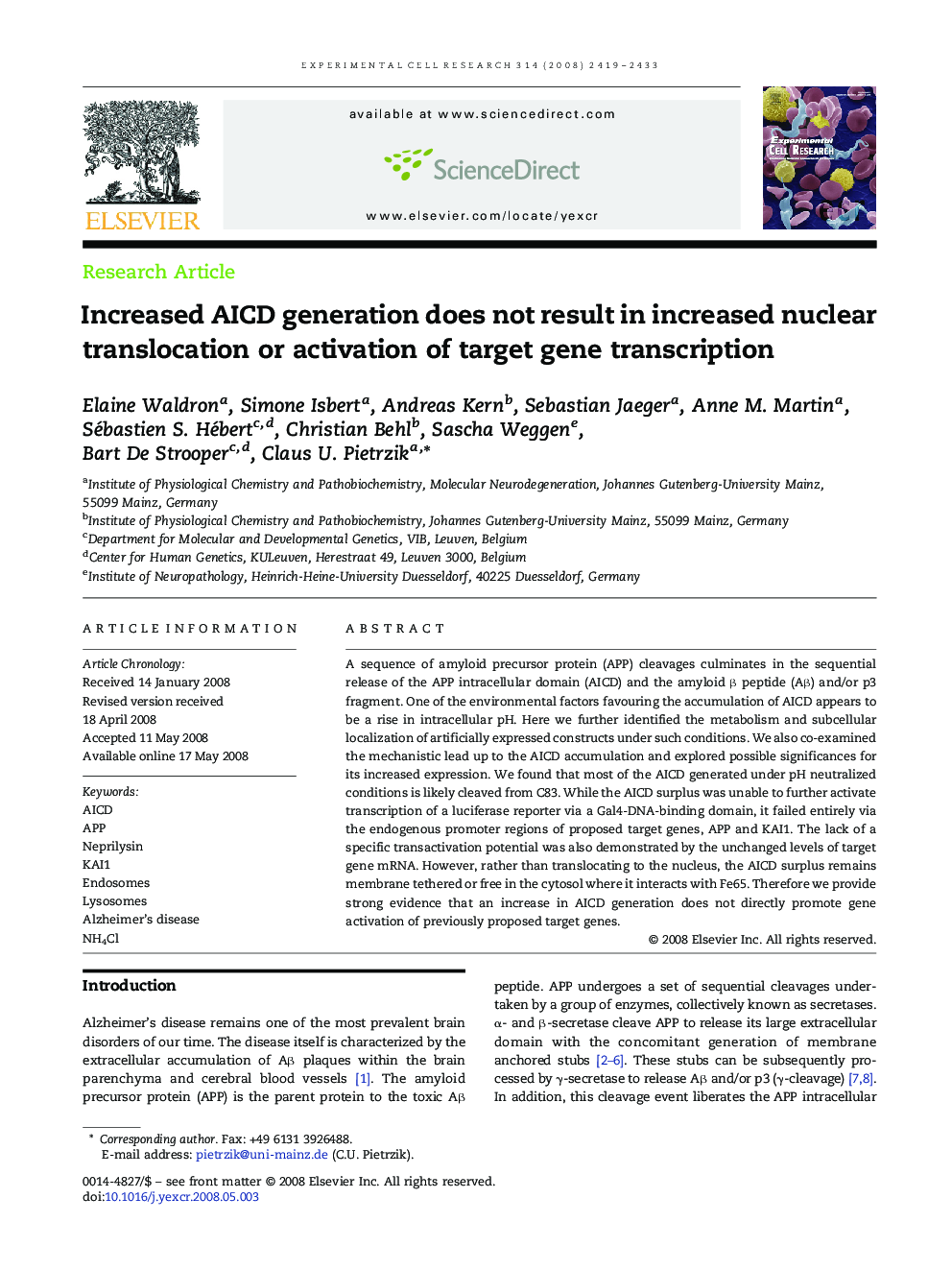| Article ID | Journal | Published Year | Pages | File Type |
|---|---|---|---|---|
| 2131941 | Experimental Cell Research | 2008 | 15 Pages |
A sequence of amyloid precursor protein (APP) cleavages culminates in the sequential release of the APP intracellular domain (AICD) and the amyloid β peptide (Aβ) and/or p3 fragment. One of the environmental factors favouring the accumulation of AICD appears to be a rise in intracellular pH. Here we further identified the metabolism and subcellular localization of artificially expressed constructs under such conditions. We also co-examined the mechanistic lead up to the AICD accumulation and explored possible significances for its increased expression. We found that most of the AICD generated under pH neutralized conditions is likely cleaved from C83. While the AICD surplus was unable to further activate transcription of a luciferase reporter via a Gal4-DNA-binding domain, it failed entirely via the endogenous promoter regions of proposed target genes, APP and KAI1. The lack of a specific transactivation potential was also demonstrated by the unchanged levels of target gene mRNA. However, rather than translocating to the nucleus, the AICD surplus remains membrane tethered or free in the cytosol where it interacts with Fe65. Therefore we provide strong evidence that an increase in AICD generation does not directly promote gene activation of previously proposed target genes.
